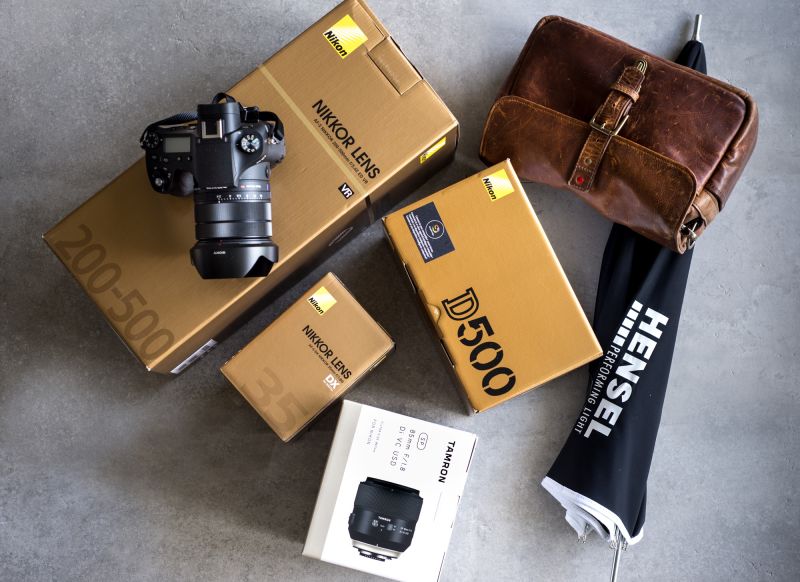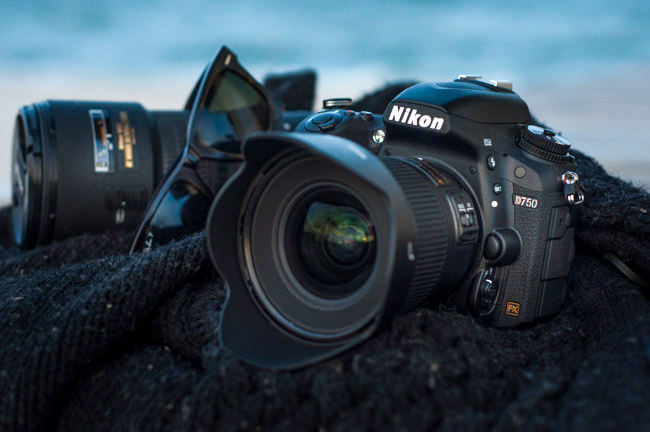
The following is the opinion of the author and does not reflect an official position of SLR Lounge
Nikon has needed good press for a while, and perhaps never more so than right now. However, I got up from my desk littered with 3 Nikons from various decades, had a long walk around the garden and have come to conclusion that today I would struggle, in good conscience, to give it to them.
But it’s more than that. In fact, I don’t even know if it’s indeed good press that they need, as much as a reshuffling of mentality.
Last week a Nikon sector published the collective fellowship of D850 photographers from across Asia and Africa, and, much to their dismay and chargin of the photographic community at large, not a single woman seemed to merit inclusion.
Well, there was hell to pay, and it’s not done yet. What Nikon offered up as a response wasn’t so much an apology as much as a thinly veiled explanation, perhaps even with a touch of ‘manslpaining’, according to some, and a poor apology is a second insult. Wait until people notice the fact that of a group of people selected from Asia and Africa not a single black person was among the lot…
This kind of thing happens all the time, however, where some manager in his corner office, too dazzled by the stripes on his suit doesn’t pay attention to the details and something goes awry. But everyone makes mistakes, and typically we learn from them. Yet, while we learn from them it doesn’t mean we need to make every mistake in the book, and a recent interview with a Nikon executive suggests the problems for Nikon are systemic.
Liang Shuang, of the Chinese website Xitek, published an interview with Mr. Tetsuro Goto of Nikon, who appears to be senior advisor or R&D General Manager at Nikon Group Imaging Division. While most of the interview was speaking about the DF and some other Nikon tech, the interview wasn’t yet wrapped up before Mr. Goto shared his thoughts and opinions on other camera brands and their consumers. And, unless much was lost in translation (article was published in Chinese), the content is all at once baffling, but also sort of explains some of what we’ve seen from the brand.
On the technical side of things we get a little look into how Nikon views its line-up and how they plan to move forward. Mr. Goto admits that full frame is the trend and states that if Nikon will go into mirrorless it will be full frame. This is not entirely surprising, as Nikon probably understands that Fuji and Sony have APS-C on lock. They would be immediately compared, and without the benefit of experience, would likely be a bit behind.
He then goes on to discuss the Df as a retro camera and while singing its praises tells people that if they want a second version of it then more people need to go buy the old one – actually urging people to do so. Make of that what you wish. But it’s after that where things get curious…
You can read the full interview here, but particularly it’s the following section that’s of most interest (combined translation of Google Translate, Nikon Rumors, and native speaker):
The Nikon customer base is very broad, from novice to enthusiasts to prosumer to professional, that’s Nikon’s advantage. Olympus, Sony and Fujifilm can only cover a small part of that. So far there is no professional using their products. So when they develop products, even like retro style, they only try to meet these people and that’s only what they can do. Their customer base is limited anyway, so they have limited view in developing products.
Nikon would never take everyone’s features to integrate to Nikon products. Of course we would consider good stuff, mostly things behind the back. Nikon would absolutely not consider overall view, design style, and function from others. Because Nikon has almost 60 year history of making cameras and we have been communicating with all kinds of customers and listen to them. With such experience we are at a level that cannot be compared to those other companies. If we were to introduce a mirrorless camera, we would not be like them, such as pushing out a lot of models. We will lock in customer’s main requirement to introduce a new product. If fact, before A9 was introduced, Sony went through a lot failure internally.
That’s a lot to take in, and there’s a lot that could be derived from it.
Stating that Nikon’s customer base is very broad, covering all manners of users is something that needn’t be challenged; Nikon is Nikon and Nikon is a pillar of the industry. But Mr. Goto goes on to say in reference to the other brands, “Their customer base is limited anyway, so they have limited view in developing products.”
It would probably be safe to assume that if you’ve read this far the irony here isn’t lost on you. Sony and Fujifilm are both pushing the development of the industry whereas Nikon can be seen as holding back the tide of progress. Sure the D850 may be, and probably is, the best DSLR on the market, but it’s like being the best combustion engined car in the age of the Tesla.
While the lion’s share of the market between these companies is less than Nikon’s, to suggest that Sony and Fujifilm only cover the needs of a small audience seems bizarre given the high growth rate of both of those brands, and the loyalty they have managed to earn in a short time. But even more bewildering is what comes next, that there are no professionals using their products. That just shows a bold ability to look facts in the face and deny them.
Pro photographers from all genres are using Sony cameras and Fujifilm is garnering more by the day; maybe not in sports or wildlife, but most other areas. I mean, Fuji has a medium format system now for crying out loud, and that’s generally the foray for a specific type of pro or discerning consumer – people can’t look to Nikon to satisfy that need because Nikon doesn’t even have a medium format platform, making it an even more baffling angle to take.
And it continues.
After a few words extolling the nonpareil nature of Nikon’s history, and how much the company communicates with and listens to their consumers, there is mention of Sony’s ‘failure internally’. Well, to that I say, “pot.kettle.black”.
Sure, while Sony has had their issues, it’s news of Nikon’s mishaps and recalls that have gobbled column inches for years. Most of Sony’s problems have been software related, mendable by firmware update. Last I checked I couldn’t fix the D750’s shutter problems by plugging it into my laptop.
It would be remiss not to mention too, that there is no mention of Canon, and if I could speculate here, that silence is telling; telling that Nikon still feels that their only real competition is Canon. To some degree that makes sense, since they’re the only two clinging onto the DSLR, but it’s hard to imagine Nikon doesn’t see that they’re not just competing with the 5D IV or 7DII, but competing in a game of top trumps with the A9, A7rii, a6500, X-T2, GFX-50s, and more than I am inclined to list. And those cameras are rewriting rule books, shifting the goal posts, and finding new buyers whereas Nikon hasn’t done anything really to break new ground.
There has been a renaissance of sorts, in photography over the past 5 years, but some in Nikon’s ‘positions of pull’ seem to have been unaffected, or unwilling to embrace – simply just marketing the past to users of today. It’s not a stretch to think that the recent debacles are a reflection of this kind of thinking.
As a long-time Nikon lover and user, from a lineage of Nikon users, I hope they change. Actually, I also hope these translations were totally off.
[REWIND: THE FUTURE OF NIKON WITH THE D850 & MIRRORLESS | LIFE & DEATH AT THE DOORSTEP]
Sources: Xitek, NikonRumors









Get Connected!